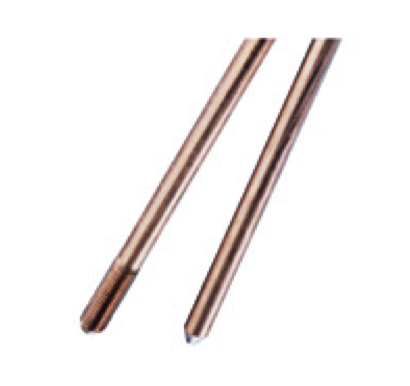 While there’s no known solution to completely protect your facility from naturally occurring environmental threats, certain steps can be taken to minimize risk. These precautionary steps to total facility protection include the following concepts:
While there’s no known solution to completely protect your facility from naturally occurring environmental threats, certain steps can be taken to minimize risk. These precautionary steps to total facility protection include the following concepts:
- Direct strike protection
- Grounding and bonding systems
- Transient surge and over-voltage protection
To maximize both the effectiveness and service life of a grounding system, careful considerations must be followed. Read below to learn three considerations to keep in mind when installing your next grounding system.
1.Select Superior Products
When selecting the right products for your grounding system, remember that superior products will extend the asset’s life. The National Bureau of Standards conducted the longest documented study on corrosion of buried copper and galvanized materials.
From this study, the following was concluded:
- Copper-bonded steel shows minimal corrosion when compared to galvanized steel.
- On the other hand, galvanized steel revealed a loss of zinc, which led to excessive steel corrosion.
Knowing that copper-bonded ground rods have less risk of corrosion, ERICO offers copper-bonded ground rods that have an electrolytic coating of copper deposited over nickel. This helps ensure a long-lasting molecular bond between the copper and steel core.
The copper coating will not crack, slip or tear when being driven into the ground, making copper-bonded ground rods applicable for a variety of soil conditions. Plus with a service life comparable to stainless steel, copper bonded ground rods are a better value in comparison to stainless steel or galvanized rods.
2. Consider Connections
Within a grounding system, there is a network of conductors bonded together to route the electrical current safely into the ground. Because the current carrying capacity and efficiency of a grounding circuit depends on the quality of the grounding connection, they are often considered one of the most important elements of a grounding system.
That said, connections can become a weak point in the system due to aging and corrosion. To eliminate this issue, ERICO offers the CADWELD exothermic welding process, which produces a connection with a permanent, molecular bond.
Exothermically welded connections offer benefits like reduced labor costs, inexpensive equipment, no special skills required and no external heat or power source needed.
3. Periodically Test System
To ensure that your grounding system will perform effectively and efficiently, it’s recommended to test soil resistivity. The most accurate method and the one that ERICO recommends is the four-point method. In some instances, the soil should be tested prior to installing a ground electrode system in order to ensure that the grounding system meets grounding electrode resistance requirements. In cases like utility installations, the utility company determines this value. For other installations, the manufacturer of the equipment being installed specifies a value. Plus, international standards and requirements vary.
In addition, it’s also recommended to test resistivity during the following scenarios:
- Building expansion
- Addition of significant electronics or telecommunication equipment
- Installation or expansion of a lightning protection system
- Issues with power quality
If soil resistivity is not low enough, the system may need additional ground rods during installation. In these instances, it’s recommended to use Ground Enhancement Materials (GEM). GEM is the ideal material to use in areas of poor conductivity, such as rocky ground, mountain tops and sandy soil. GEM dramatically reduces earth resistance and impedance measurements.
Want more information about grounding systems? Check out our free guide, Grounding, Bonding and ERICO CADWELD. Or, visit our website to browse our full offering of copper-bonded grounding products.
